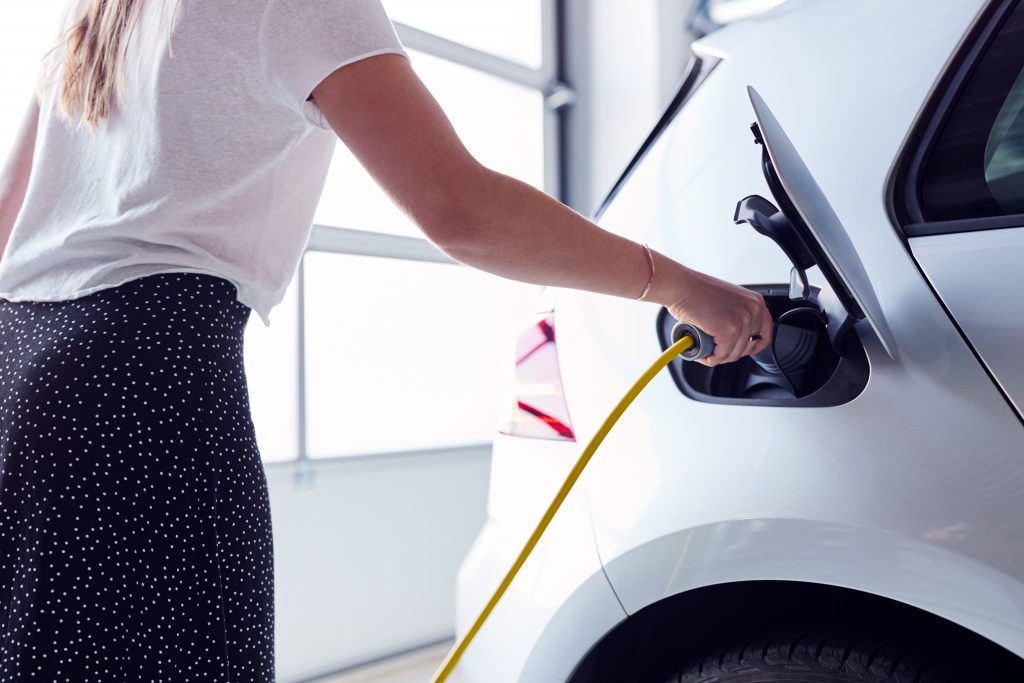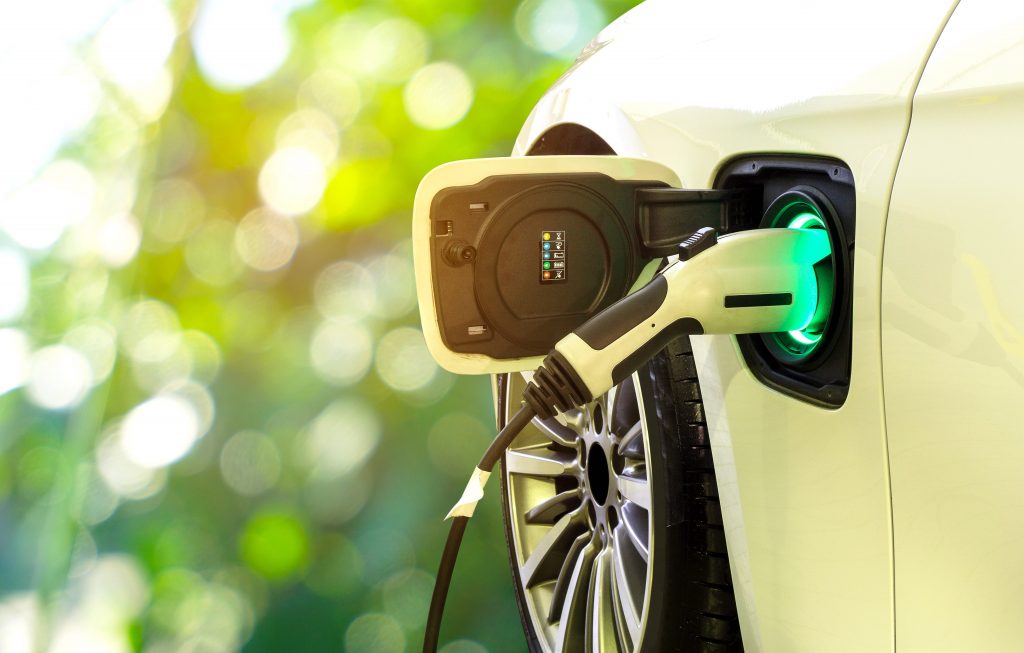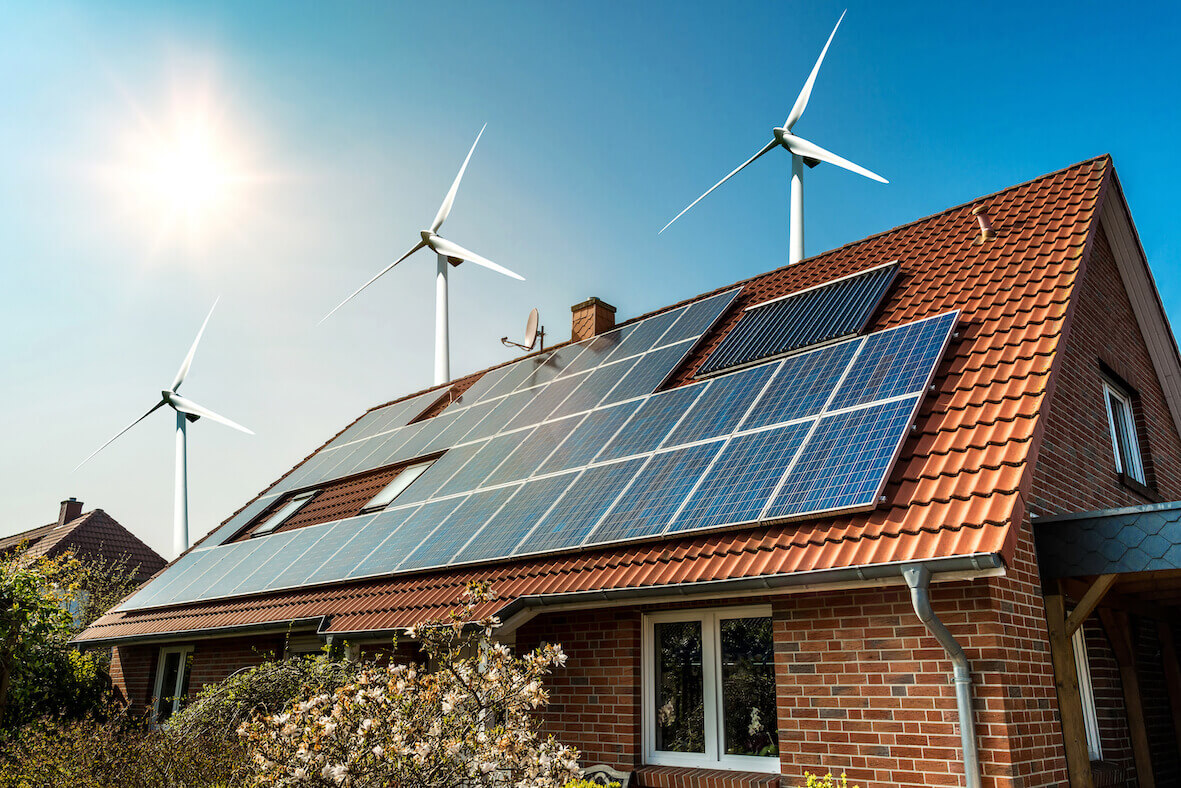Plug into our guide to electric car charging points.

You’ve ordered your Electric Vehicle (EV) but what next?
If you haven’t already got an EV charger installed at home, you may not know how to go about installing one. This blog gives the answers to some basic questions:
How much will it cost to get an electric car charging point fitted?
Firstly, if you are buying a new car, check with the company you are buying the car from or the supplier. Some car manufacturers and lease companies offer free or discounted home chargers when you buy or lease an EV.
If not, then you’ll have to cover the cost or at least some of the cost of installation yourself. It is worth checking to see if you may be eligible for partial grant funding from the government’s Electric Vehicle Chargepoint Grant. If you own or rent a flat, you may be eligible for a grant of £350 or 75% off the cost of buying and installing an EV charger.
Electric vehicle chargepoint grant if you own or rent a flat: Overview – GOV.UK (www.gov.uk)
The typical average cost for an EV charger is £1,000. There are a number of factors that will influence the cost of installing a new electronic vehicle charging port at your home including the power output design, the type of charge available (most car charging port manufacturers provide two power rating choices of either 3kW or 7kW for residential use). EV Charger Cost 2023: Install Home Car Charger Price Guide (priceyourjob.co.uk)
The difference in cost is generally down to its power output, site accessibility and who you hire to install to it.

How do I apply for the EVHS grant?
In order to get the wallbox grant, the wall charging unit has to be installed by a supplier approved by the Office for Zero Emission Vehicles (OZEV).
If you are eligible for the grant, you can apply via an OZEV authorised installer and ask for a quote here:
Find an electric vehicle (EV) chargepoint installer – GOV.UK (www.gov.uk)
Only vehicles that have been approved as ultra-low emission vehicles by the Office for Zero Emission Vehicles (OZEV) are eligible for OZEV residential ChargePoint grants. A list of eligible vehicles can be found here:
Residential chargepoints: eligible vehicles – GOV.UK (www.gov.uk)
Most installers will even take care of your paperwork for getting a government grant from the Office of Zero Emission Vehicles.
Which charger should I get?
Did you know you can actually use a normal 3-pin plug to charge an electric vehicle? But this is a very slow way to charge your car and you would have to leave the vehicle plugged in overnight and it wouldn’t be recommended for regular use. But it may be worth keeping a standard 3-pin UK plug-compatible charging cable in the boot though just in case you can’t get to a dedicated EV charge point but installing a home charger is the recommended solution.
EV chargers are classed as rapid or ultra-rapid, fast and slow, depending on their speed.
Slow charger
Slow chargers can be installed at homes that can’t facilitate 7kW chargers. They can take 12 hours to charge your car from 0-100%. Slow chargers include the three-pin 3kW charge points found in lamp posts in residential streets. Slow chargers are the second most popular chargers in the UK, but are only recommended for emergency use (i.e. if no other means of charging is available).
Fast charger
A fast charger is rated at 7kw or 22 kw. A 7kW home charger will be three times faster than a domestic socket, delivering around 30 miles of electric range per hour. It will take around 8 hours to fully charge your car. Most EV owners opt for this charger at home.
A 22kW home charger will be even faster, but this requires a three-phase electricity supply and very few cars can receive a 22kW charge from an AC source like a domestic wall charge so please check with your car’s manufacturer.
Rapid charger
A rapid charger is rated at 50kw and can zap your battery with 80% charge in just 40 minutes, but homes cannot facilitate a rapid charger due to the amount of power they require. The vast majority of EV Rapid Chargers are located at service stations, rest stops and other public locations.
Electric car charger types and connectors – a visual guide | RAC Drive
Tethered or untethered?
What does that even mean? Well basically, once you have decided on what charger you want you then must decide if you want an EV charger which has a cable permanently attached or not. If you opt for a tethered charger then you won’t need to drive around with a cable in your boot as it will be fitted to the charger. But the downside of this is that you could be left with an obsolete charge point should the industry move away from Type 1/Type 2 sockets or you buy a car with a different connector.
And then there is also the aesthetics, an untethered charger looks tidier on your wall as there’s no cable permanently on show, but you will have to buy the cable separately if your car doesn’t come with one and this could cost an additional £100 to £200 (approximately). Tethered vs Untethered EV Chargers – EV Compared
Electric car charging cables
The type of electric car charging cable you will need will depend on your car and the power rating of the charge point. The most common type is a Type 2 plug but check with the car’s manufacturer.
Smart chargers
If you are buying a new charging point it will be a Smart charger. Electric vehicle charge points sold in Great Britain for private (domestic or workplace) use are being regulated to help manage the increase in electricity demand from the transition to electric vehicles.
The regulations ensure charge points have smart functionality, allowing the charging of an electric vehicle when there is less demand on the grid, or when more renewable electricity is available, or the tariffs are cheaper. The regulations also ensure that charge points meet certain device-level requirements, enabling a minimum level of access, security and information for consumers. The legislation does not apply to charging points sold before June 2022.
The Electric Vehicles (Smart Charge Points) Regulations 2021 is the underpinning legislation.
Who do I ask to install the charger?
You can refer to the list of approved installers as noted above. Alternatively, many new EV owners refer to their energy providers who often have accompanying EV tariffs which offer competitive rates.
How does the installation process work?
- Your installer will survey your home to ensure a charger can safely be fitted to your home and will provide a quote
- The installer will run all the necessary background and safety checks and gain the appropriate permissions etc
- Your charger will be fitted in accordance with regulations
- The unit is tested and connected to your fuse box if there is space. If not, a separate consumer unit may need to be fitted
- If you are using an approved installer and you are eligible for a grant, they will complete your OZEZ paperwork on your behalf.
- Your installer should then provide you with an electrical certificate to show that it has been safely fitted to the latest electrical regulations
EV home charger installation process (uswitch.com)
EV Tariffs
There are generally two types of EV tariffs aimed at electric vehicle owners:
Two-rate tariffs
The most common EV tariff offers two different electricity rates depending on the time of day, with much lower rates at night.
Single-rate tariffs
You pay the same rate throughout the day, but it’s discounted if you have an EV. This type of EV tariff works the same way as regular deals, where you pay a flat rate, but it’ll be a special price if you’ve an EV, or you’ll get extras such as bill credit. You pay the same rate throughout the day, but it’s discounted if you have an EV. This type of EV tariff works the same way as regular deals, where you pay a flat rate, but it’ll be a special price if you’ve an EV, or you’ll get extras such as bill credit.
Electric vehicle energy tariffs – Money Saving Expert
Free charging points
There are still free electric car charging points in the UK, these are often found in supermarkets, shopping centres and hotels. So, you could potentially do your weekly shop and charge your car for free at the same time! Free Electric Car Charging Points UK: Where are they all? – Zapmap (zap-map.com)
Timelines
On average, it can take 3 to 6 weeks to get an EV charger installed from start to finish. Most of the time is taken up with background work like safety checks on electrics or applying for permissions from local grid operators.
How do you find a charger when you are out and about?
Many charger providers will have their own apps or Zap Map is a handy application which you can keep on your phone to check the location of charging points when you are out and about. And the number of car charging points is rapidly rising. The app gives a running total of how many there are in the UK and is updated monthly – click here to access the map: Map of charging points for electric car drivers in UK: Zap-Map
EV chargers and property
Homes with EV charging points are becoming a key selling point for buyers. From 2030, the sale of new petrol and diesel cars will come to an end. New homes in England will need to have electric vehicle charging points installed and Rightmove has recently conducted some research which identified that the number of properties listed on the portal with EV charging points rose by 541% in a 12 month period! Homes listed for sale with access to electric car charging points increase six-fold in a year – Rightmove Press Centre
Buyers are increasingly prioritising environmental concerns during the home-buying process and having an EV at your property, should you decide to sell in the future, will be a bonus for buyers.
EVs are becoming a big thing and although there is an initial outlay to get a charger fitted, not only will you be helping to reduce your carbon footprint by losing your petrol or diesel car, but you will be working towards future proofing your home. And you will earn the cost of installation back with the money you’ll save on fuelling your car.



